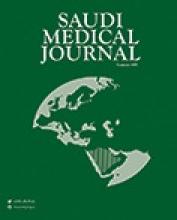Abstract
OBJECTIVE: Midazolam, propofol and fentanyl were compared in terms of sedation during cataract extraction. Hemodynamic parameters, sedation level, postoperative satisfaction, and side effects were investigated.
METHODS: The study was carried out in Hacettepe University Hospitals Ophthalmology Operating Theatres in 2005. The patients received only midazolam (0.02 mg kg-1), or midazolam (0.02 mg kg-1) + propofol (0.2 mg kg-1), or midazolam (0.02 mg kg-1) + fentanyl (1 microgram kg-1), or midazolam (0.02 mg kg-1) + propofol (0.2 mg kg-1) + fentanyl (1 microgram kg-1). The sedation level of patients was measured according to a physician questionnaire. Postoperative nausea/vomiting, headache, and patient satisfaction were determined via a patient's evaluation scale.
RESULTS: In the groups receiving fentanyl, the hemodynamic response to peribulbar block insertion was minimal (p<0.05) and the sedation level was best (p<0.05). Respiration rate and O2 saturation of patients receiving midazolam, propofol, and fentanyl decreased after sedation (p<0.01) and postoperative satisfaction was high in this group (p<0.01). Patients in the midazolam group showed a prominent reaction to peribulbar block insertion while movement during the operation was obvious (p<0.05).
CONCLUSION: The combination of midazolam, propofol, and fentanyl should be preferred to other study groups as the sedation level is suitable for cataract extraction with high postoperative patient satisfaction and without any side effects.
- Copyright: © Saudi Medical Journal
This is an open-access article distributed under the terms of the Creative Commons Attribution-Noncommercial-Share Alike 3.0 Unported, which permits unrestricted use, distribution, and reproduction in any medium, provided the original work is properly cited.






